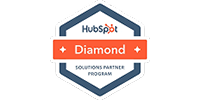Measure Everything Worth Managing - The Process of CRM Optimization
The data in your CRM can tell you a lot about your demand generation program and revenue operations as a whole. Your CRM can tell you anything from the number of leads you have to how much activity your sales team is turning out. It can answer more complex questions like how many touches does it take for me to book a meeting or how long is my sales cycle. Without proper CRM optimization, the answers to these questions become much more difficult to find.
How do you optimize your CRM? Whether you are using HubSpot, Salesforce, or another program, the general process is the same.
Start with a CRM Audit
To begin with CRM optimization, you need to understand that your insights are only as good as the data your team is putting into your CRM.
A new CRM optimization project should always start with a full audit of your data, and this should be done in some cadence (monthly, quarterly, etc). It’s not enough to solely look at the accuracy of your leads/contacts email and phone numbers (though that is also important). You should be looking at sales and marketing metrics to ensure they are all being inputted correctly. Once you conduct that audit, you’ll see what data is missing.
The best way to ensure that data entry is accurate is to ensure that a uniform process is in place across your team.
Create a Process
CRM optimization isn’t a one time project. It is a uniform process that is clearly documented and dispersed to your team for reference. You can’t let your team “choose their own adventure” in your CRM, or you will spend more time on ad hoc CRM optimization projects or data corrections than you will pulling actionable insights from your CRM!
The best way to set the standard process is to take the time, along with key stakeholders from each department that uses your CRM, to whiteboard your entire sales process from lead to close to customer success onboarding. From there, you will be able to visualize what information needs to be collected and added to the CRM and when it should be added.
In order to continue down the path of CRM Optimization, be sure to create a process document. This will also come in handy when you onboard new employees who will be interacting with the CRM.
Once a process is in place, it's time to track compliance.
Setting up Compliance Dashboards
You are taking the steps to optimize your CRM, and you have gone so far as to map out your process and then create a process document for your team to use and follow; your job is done, right? Not so much.
I find that building out a Compliance Dashboard allows you to continue to monitor the data entry going into your CRM. An organization can track all different types of things on a compliance dashboard, such as:
- Leads without email addresses
- Meeting Outcomes blank or unknown
- Open Opportunities with no activity against it for 2+ weeks
- Open Opportunities with projected closed dates in the past
- Leads without source attribution
- Calls logged without an outcome
These may differ for each organization, but flagging these types of compliance issues will help ensure your CRM optimization continues to add the most value possible to the revenue operations function.
Regularly Refine the Process
Over time your processes may change, which means how you input your data should change as well. On some cadence that makes sense for your organization, review your process and make sure your CRM process matches.
* * *
CRM optimization isn’t a nice-to-have project - it’s a necessity. An optimized CRM helps make sales and marketing teams more efficient and effective. It becomes easy to know how resources should be allocated.
If you want to optimize your CRM, schedule a consultation with one of our experts.










